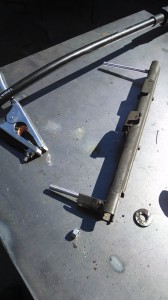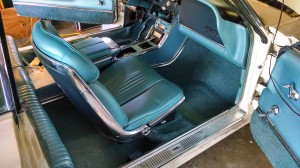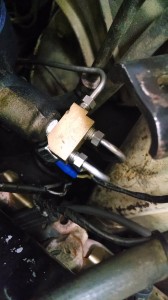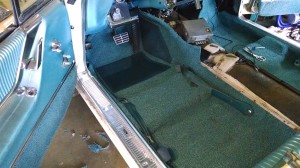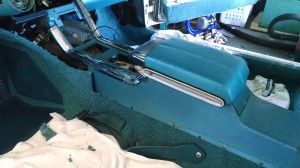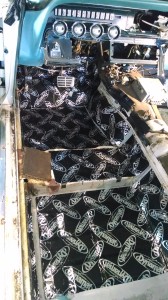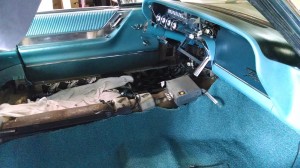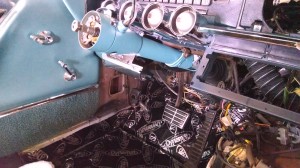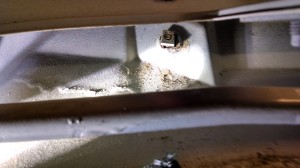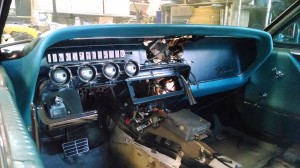The brake system on this car is about as simple as it gets, but I find myself returning to it over and over trying to get things to work right.
My son and I bled out the brakes yet again about a week ago and went for a test drive. Good news was that the gas gauge sprang to life after filling the tank, so for the brief drive home, I saw 4 working gauges for the first time.
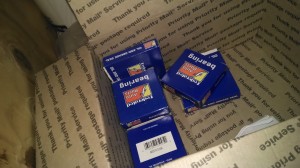
Bad news was that the brakes were still spongy and low. I tested them out in an empty parking lot and in a simulated emergency stop, the car slowed in a stately manner, then eventually came to a rest. No exactly what I was looking for. Back in the garage, I was able to push the pedal slowly to the floor with or without the engine running. No leaks in the system, though some fluid is escaping out the top of the cap. It feels as if the seals in the master cylinder have completely failed.
So . . . since brakes are important, I’m replacing yet more components. The local parts store sold me a new (not rebuilt) master and some rear brake shoes. I added these to some new front shoes I already had, then ordered new drums and new self-adjusters for all four wheels, which arrived (in a very heavy box) a few days ago.
Right now, I’ve got an impressive stack of parts waiting for me in the garage. For good measure, I also located the front wheel bearings and races I bought some months back and through them into the mix.
I find it important to remind myself now and again that this is a dashboard replacement project.
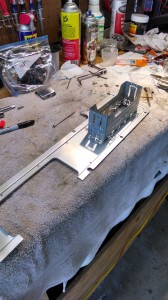
Inside the car, I have all but two trim pieces installed. One evening last week I pulled out my second best dash fascia panel and cut an opening in it for an aftermarket stereo. I used a grinder with a cutting wheel for the rough opening, then used a file and a Dremel tool to sneak up to the correct size.
Whoever designed the bracket for modern stereos didn’t count on it being mounted to sheet metal. The hold down tabs don’t hold the bracket snug with such thin material, so I shimmed it with some of the waste aluminum and epoxied the whole thing together so it won’t rattle around.
Solid brakes . . . and tunes. That’ll be nice.

